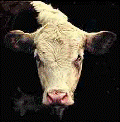Animal Science, Department of

Department of Animal Science: Dissertations, Theses, and Student Research
Date of this Version
Fall 12-2-2015
Document Type
Thesis
Citation
Garcia Gomez,G. 2015. Efficiency of energy utilization and fecal mineral excretion in Holstein and Jersey dairy cows. Master thesis of Animal Science UNL.
Abstract
Eight multiparous Holstein and 8 Jersey dairy cows were used to complete energy balance trials designed to determine the effect of breed on the production and energy efficiency of milk, and energy partitioning. A repeated switchback design was used to compare the effect of cow breed. Diets consisted of 24.5% corn silage, 18.4% alfalfa hay, 6.9% grass hay, with either 22.9% rolled corn and 14.8% soybean meal (CON) or 8.95% rolled corn and 28.8% reduced fat distillers grains (RFDDGS) DM-basis. Diets were offered ad libitum for a 28 d adaptation period and 95% ad libitum for a 4 d collection period. During the collection days, nutrient digestibility and energy use was measured; indirect calorimeter respiration head boxes were used to determine heat production. Across diets, Holstein had a lesser (P < 0.01) DMI as a proportion of BW than Jersey cows (3.54 vs. 4.22 ± 0.13 DMI % BW, respectively). Milk protein (3.76 % vs. 3.21% ± 0.11 for Jersey and Holstein, respectively; P < 0.01), and fat (4.97 % and 3.70 % ± 0.19 for Jersey and Holstein, respectively; P < 0.01) concentration increased with Jersey compared with Holstein cows. Nevertheless, yield of ECM per unit of DM consumed was not affected by breed and averaged 1.58 ± 0.05 kg/kg of DMI (P = 0.50). The milk energy output per kg of DMI, per kg of BW0.75, and as a proportion of GEI did not differ between breeds (P = 0.47). However, Jersey cows had a greater fecal energy output per kg of DMI, per kg BW0.75, and as proportion of GEI (P = 0.03). Consequently, ME as a proportion of GEI of Holstein was greater than that of Jersey cows (59.1 vs. 55.4 ± 0.65% for Holstein and Jersey, respectively; P < 0.01). Milk energy output as a proportion of ME was not affected by breed and averaged 47.0 ± 1.84 % of ME. Results from this study suggest that breed had no effect on any of the dairy efficiency variables measured.
Advisor: Paul J. Kononoff


Comments
A THESIS Presented to the Faculty of The Graduate College at the University of Nebraska In Partial Fulfillment of Requirements For the Degree of Master of Science, Major: Animal Science, Under the Supervision of Professor Paul J. Kononoff. Lincoln, Nebraska: December, 2015
Copyright (c) 2015 Gabriel Garcia Gomez